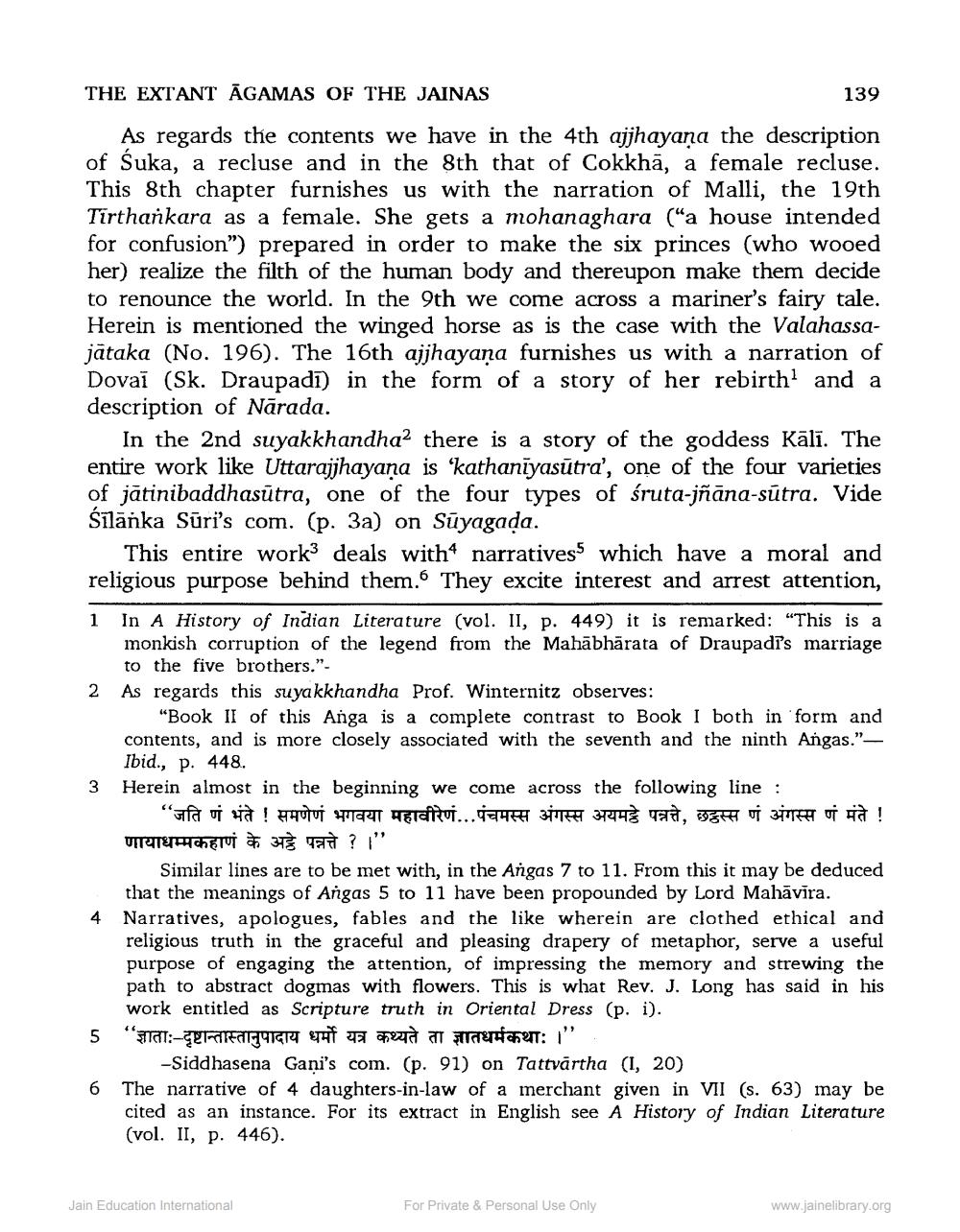________________
THE EXTANT ĀGAMAS OF THE JAINAS
139
As regards the contents we have in the 4th ajjhayana the description of Suka, a recluse and in the 8th that of Cokkhā, a female recluse. This 8th chapter furnishes us with the narration of Malli, the 19th Tirthankara as a female. She gets a mohanaghara (“a house intended for confusion") prepared in order to make the six princes (who wooed her) realize the filth of the human body and thereupon make them decide to renounce the world. In the 9th we come across a mariner's fairy tale. Herein is mentioned the winged horse as is the case with the Valahassajätaka (No. 196). The 16th ajjhayana furnishes us with a narration of Dovai (Sk. Draupadi) in the form of a story of her rebirth and a description of Nārada.
In the 2nd suyakkhandha2 there is a story of the goddess Kāli. The entire work like Uttarajjhayana is 'kathaniyasūtra', one of the four varieties of jātinibaddhasūtra, one of the four types of śruta-jñāna-sūtra. Vide Silänka Sūri's com. (p. 3a) on Sūyagada.
This entire work3 deals with4 narrativess which have a moral and religious purpose behind them. They excite interest and arrest attention, 1 In A History of Indian Literature (vol. II, p. 449) it is remarked: “This is a
monkish corruption of the legend from the Mahābhārata of Draupadi's marriage
to the five brothers.". 2 As regards this suyakkhandha Prof. Winternitz observes:
"Book II of this Anga is a complete contrast to Book I both in form and contents, and is more closely associated with the seventh and the ninth Angas.”—
Ibid., p. 448. 3 Herein almost in the beginning we come across the following line :
“जति णं भंते ! समणेणं भगवया महावीरेणं...पंचमस्स अंगस्स अयमढे पन्नत्ते, छट्ठस्स णं अंगस्स णं मंते ! Ur chETUT T?"
Similar lines are to be met with, in the Angas 7 to 11. From this it may be deduced that the meanings of Angas 5 to 11 have been propounded by Lord Mahāvīra. 4 Narratives, apologues, fables and the like wherein are clothed ethical and
religious truth in the graceful and pleasing drapery of metaphor, serve a useful purpose of engaging the attention, of impressing the memory and strewing the path to abstract dogmas with flowers. This is what Rev. J. Long has said in his
work entitled as Scripture truth in Oriental Dress (p. i). 5 “Xan:-GermaCETUR HE Deza at ETFIT: ,"
-Siddhasena Gani's com. (p. 91) on Tattvārtha (I, 20) 6 The narrative of 4 daughters-in-law of a merchant given in VII (s. 63) may be
cited as an instance. For its extract in English see A History of Indian Literature (vol. II, p. 446).
Jain Education International
For Private & Personal Use Only
www.jainelibrary.org




